It’s day 2 of the current ‘snow event’ here in Erie County, Pennsylvania. Probably a solid 30 cm (1 foot) of snow, maybe more, in the last 30 hours. Temps expected to drop into the -6 deg C range (low 20s F) next week + remain cold. Bird activity very subdued yesterday, but here’s some lovely Red-tailed Hawk from a week ago in Millcreek Twp (“Gateway to Presque Isle”):
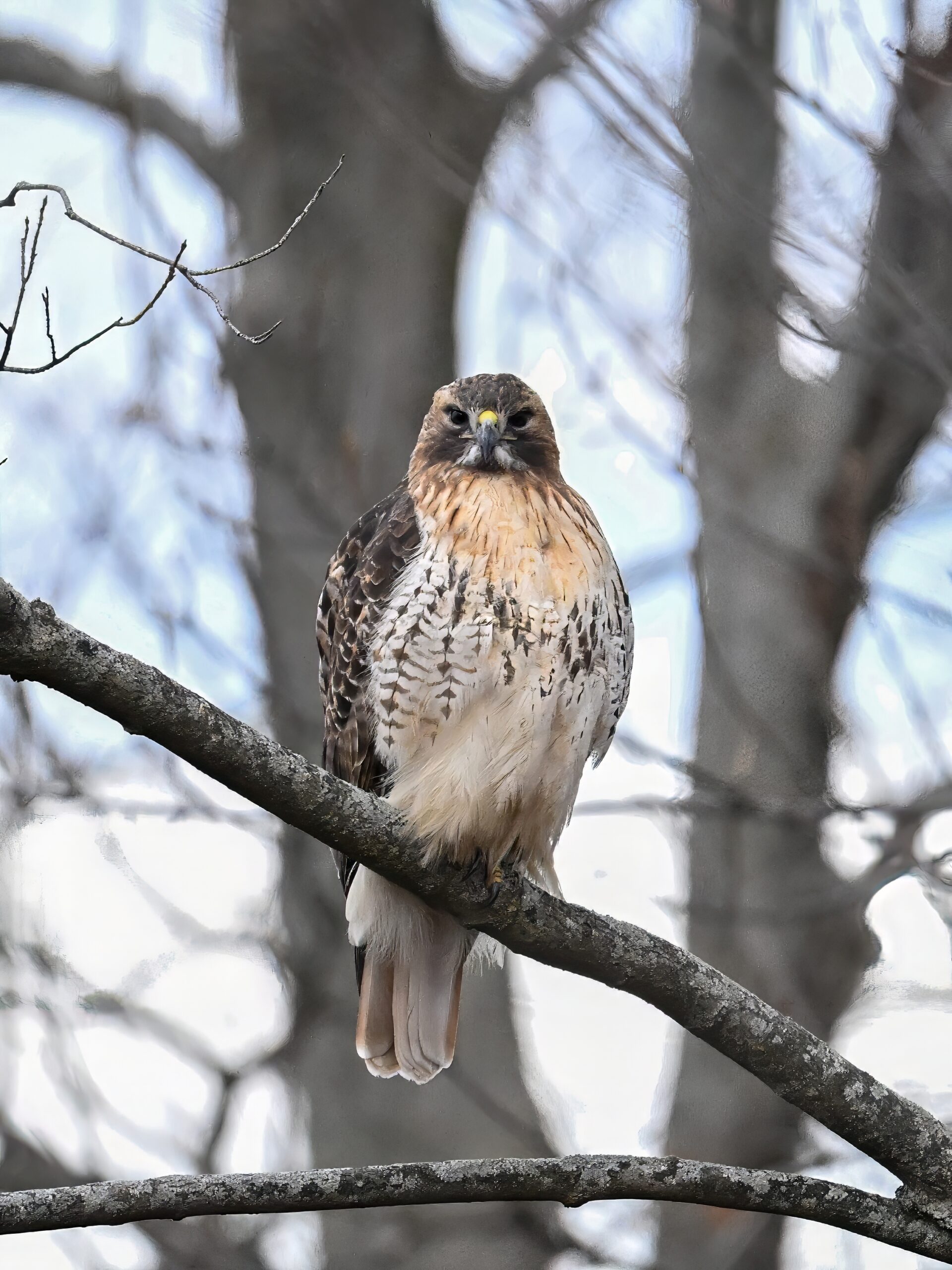
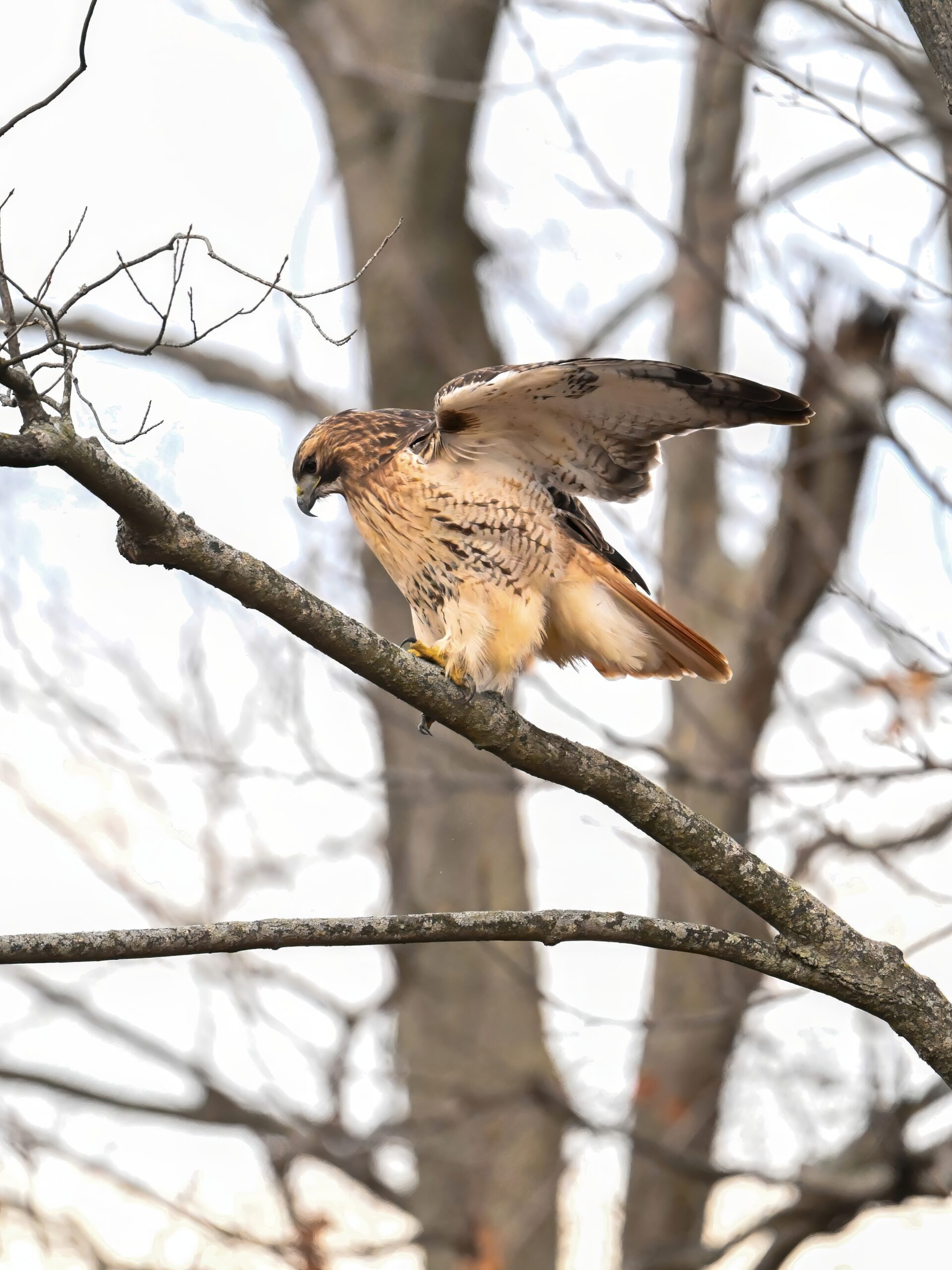
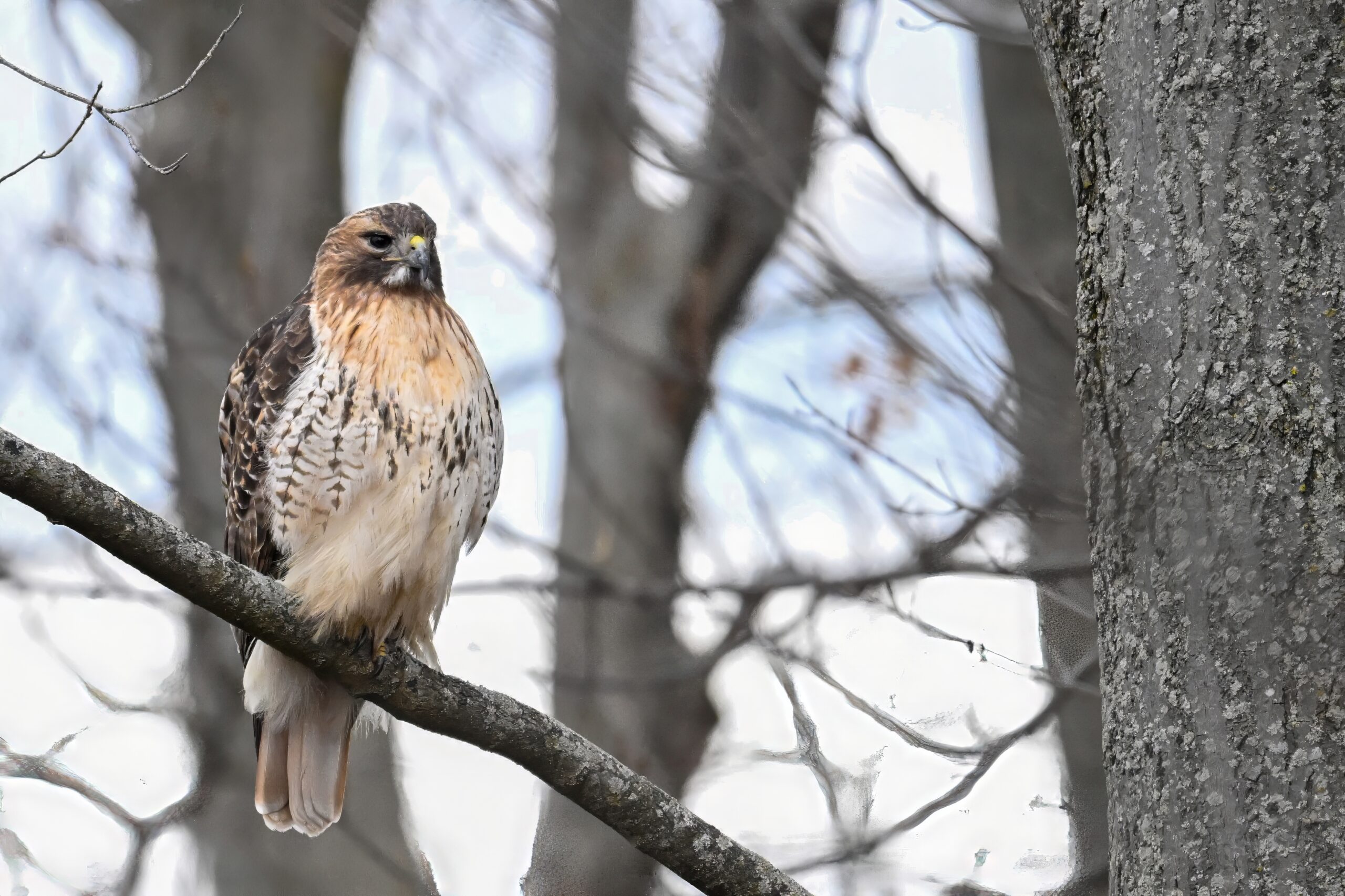
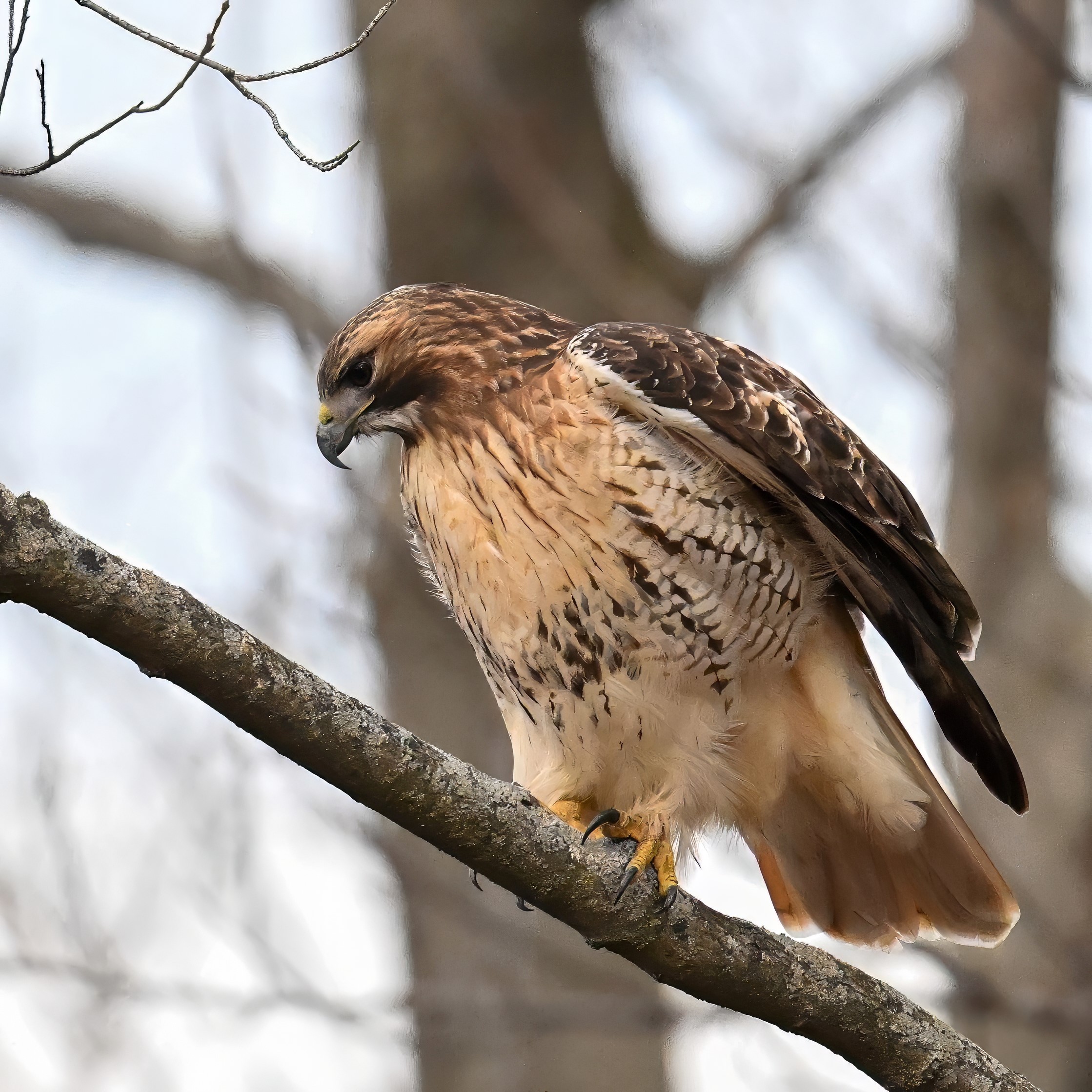
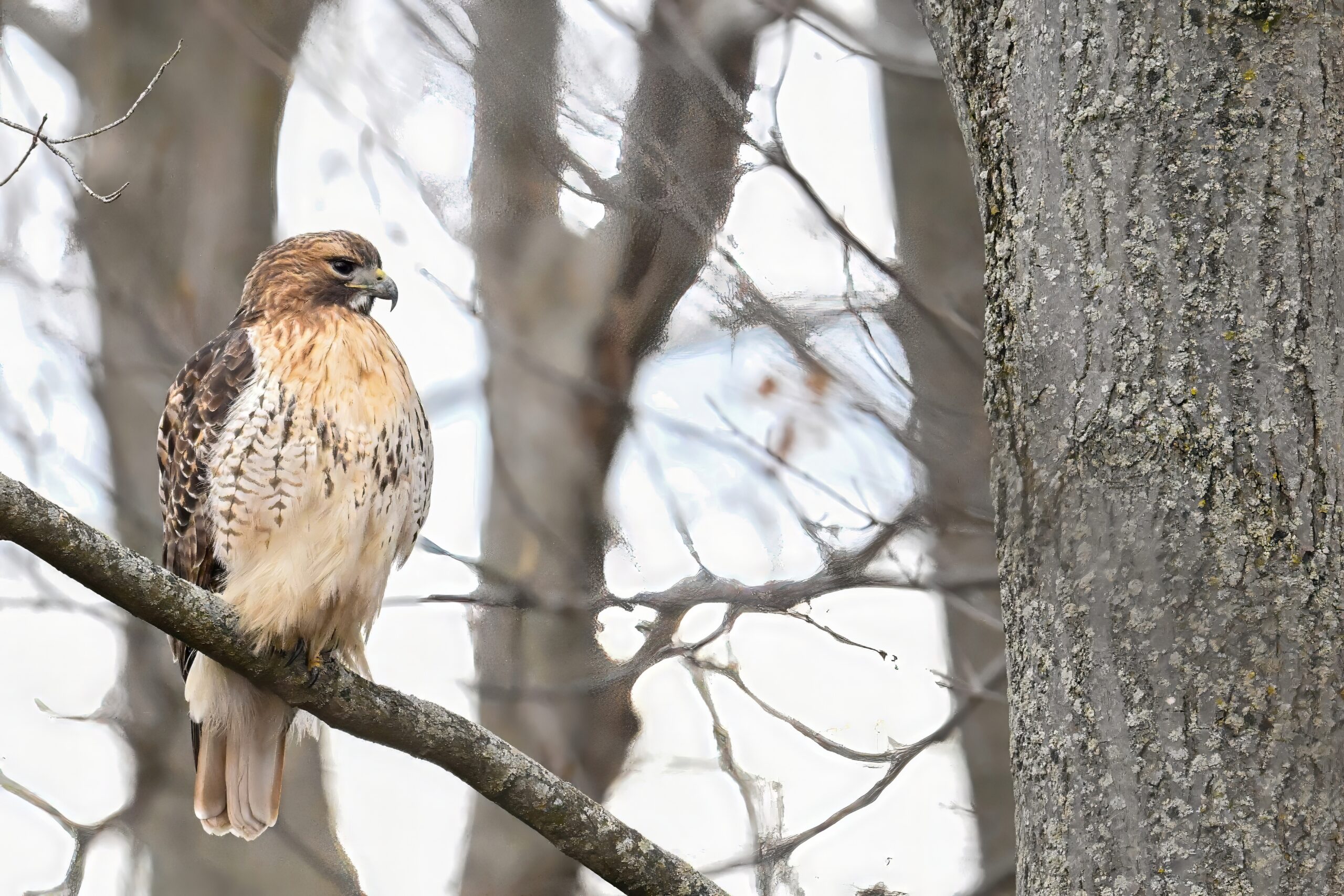
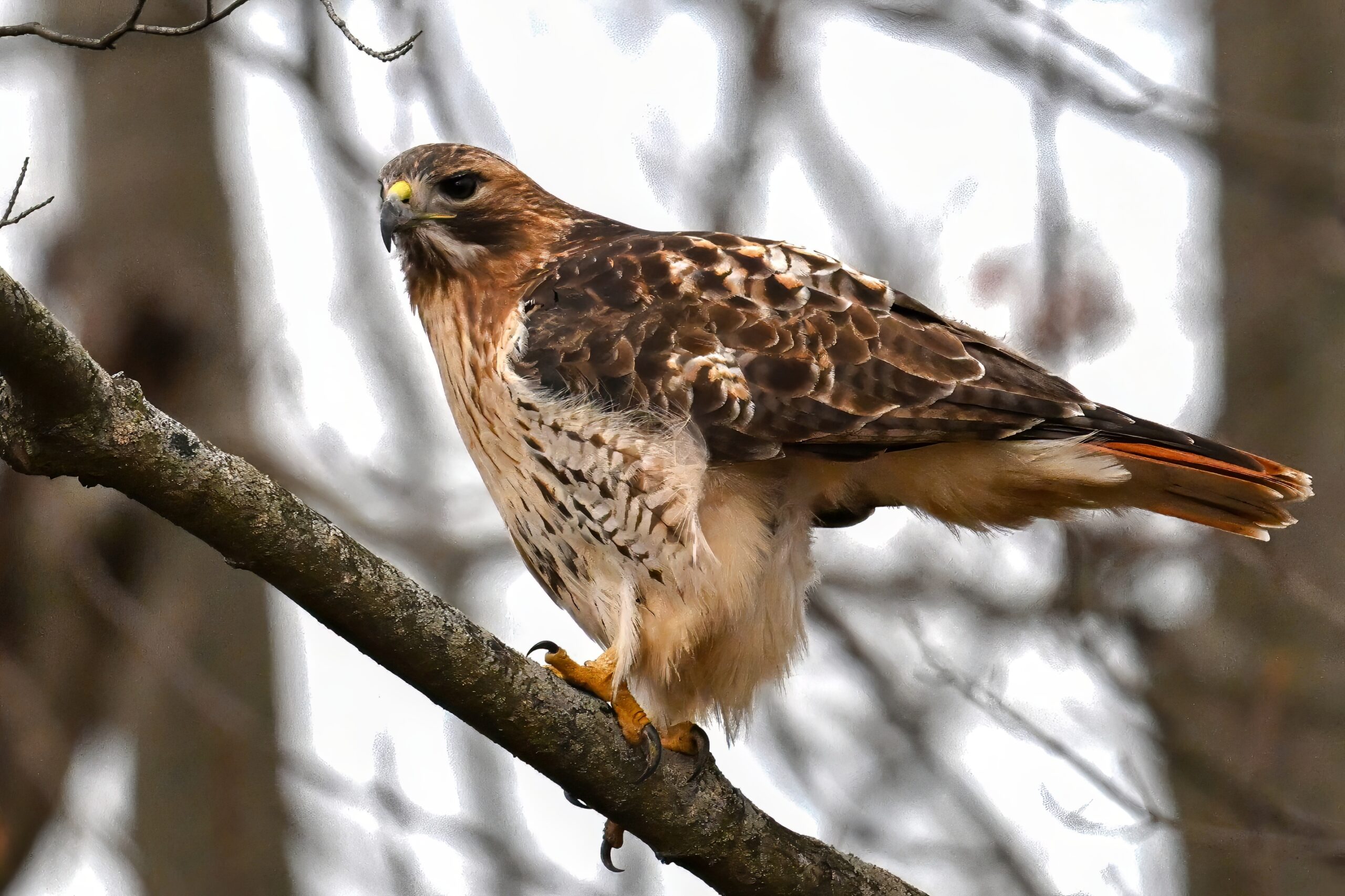
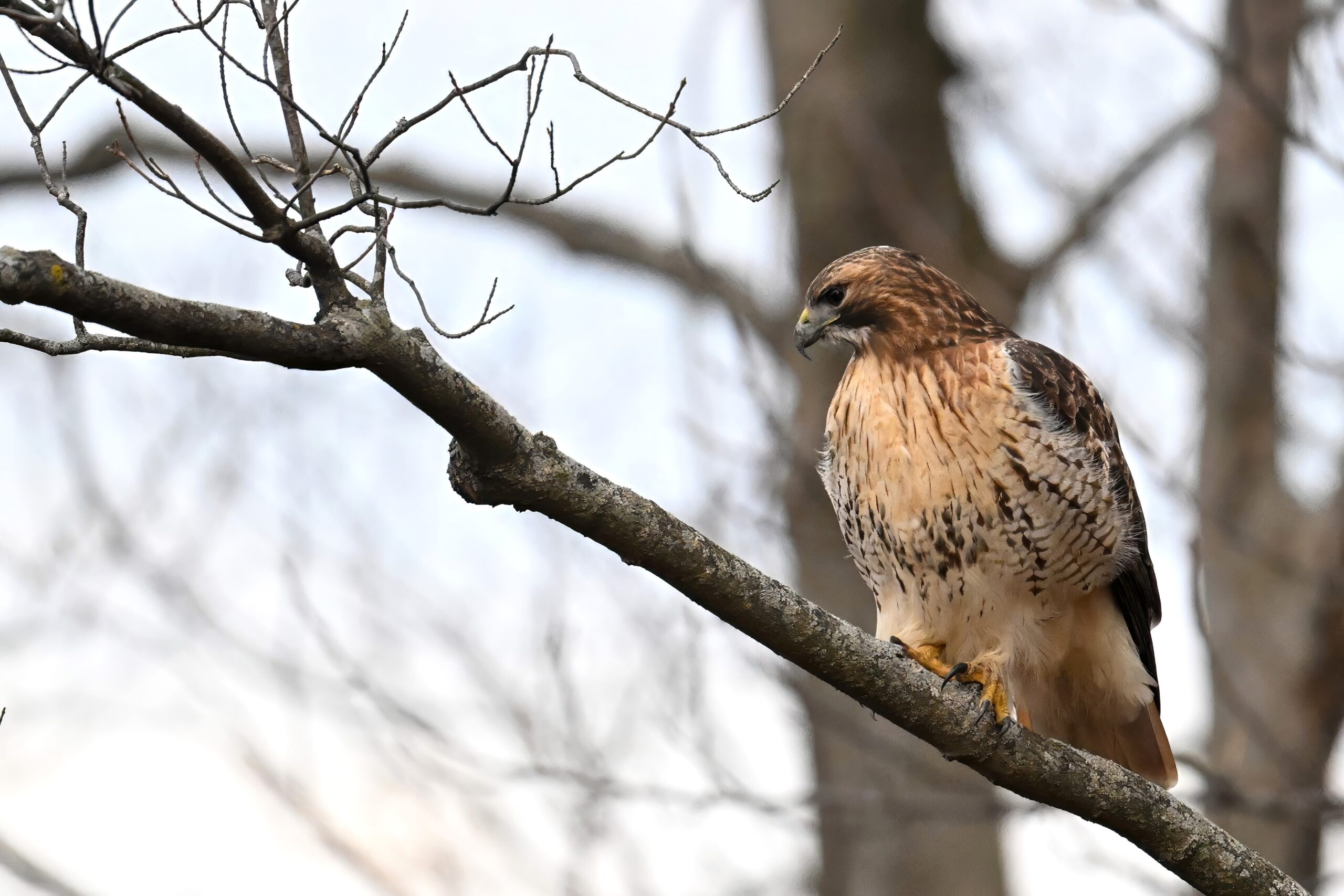
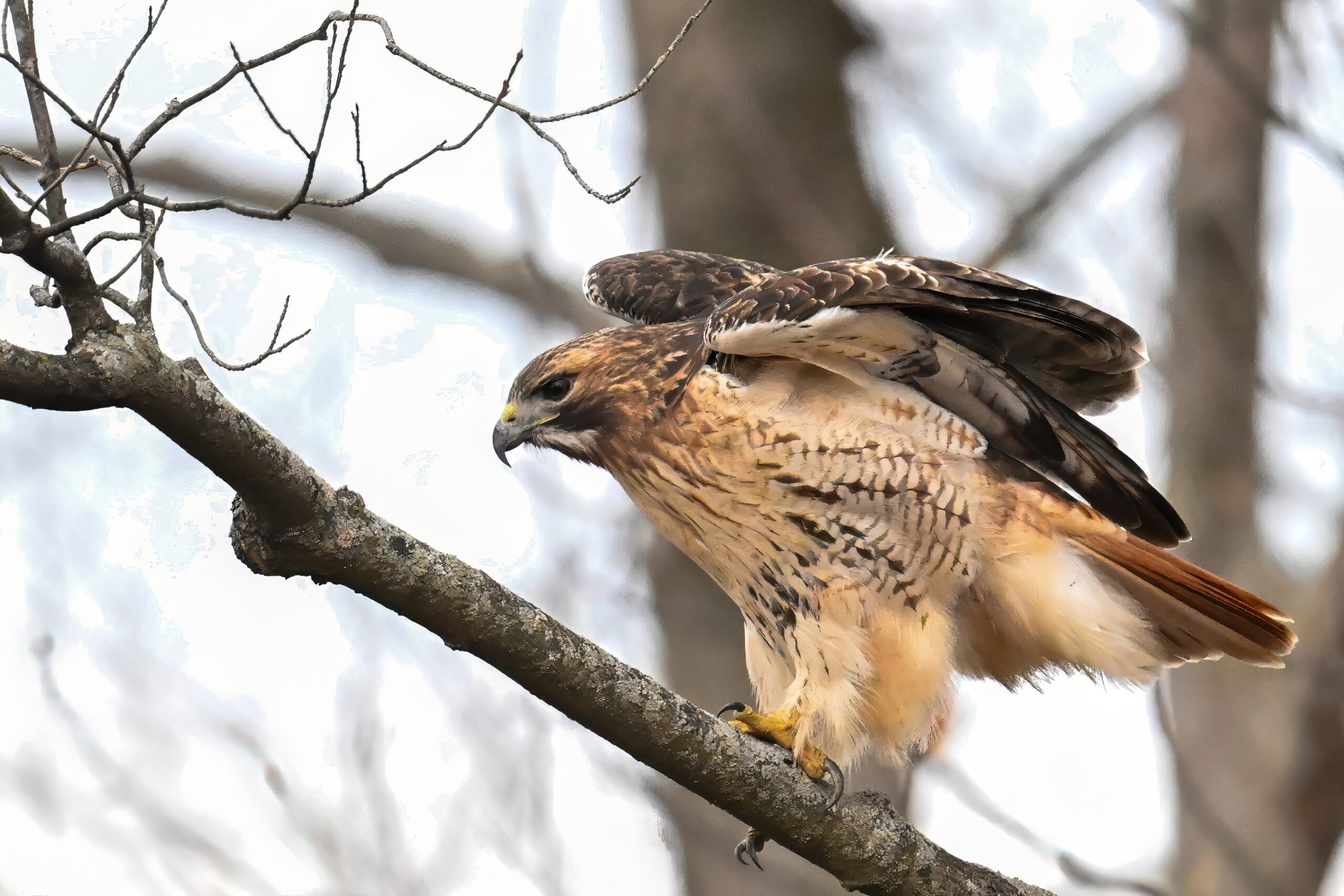
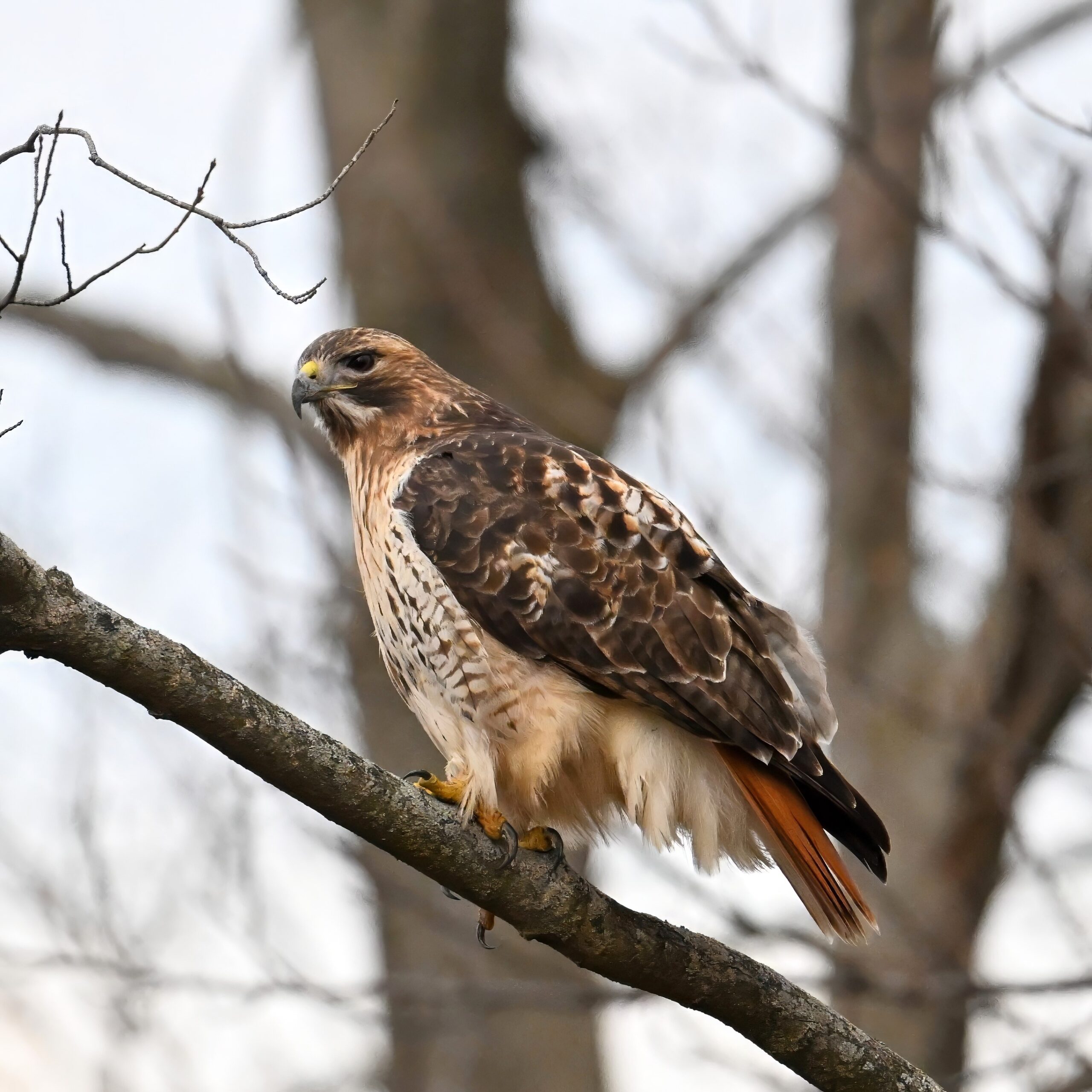
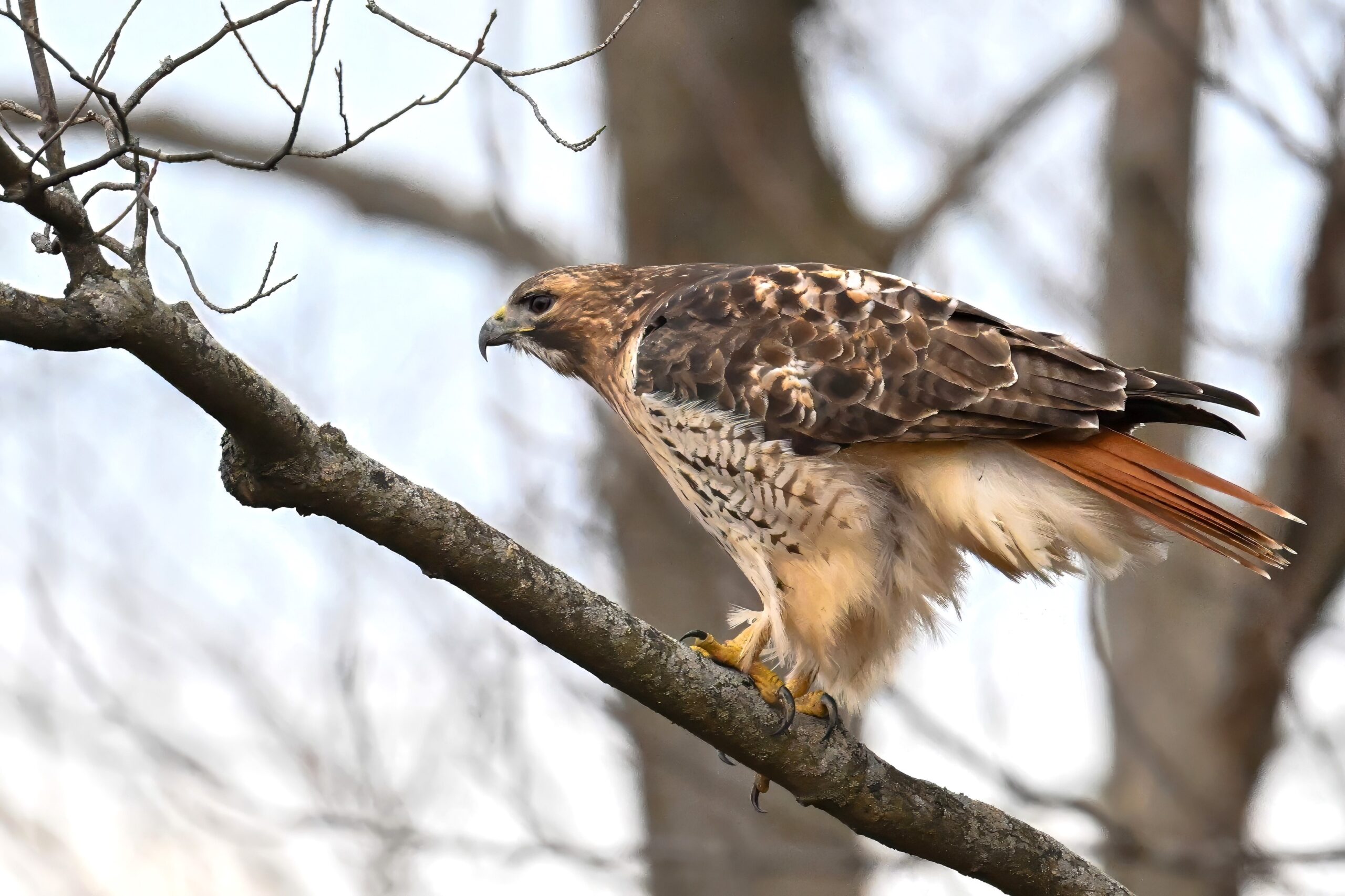
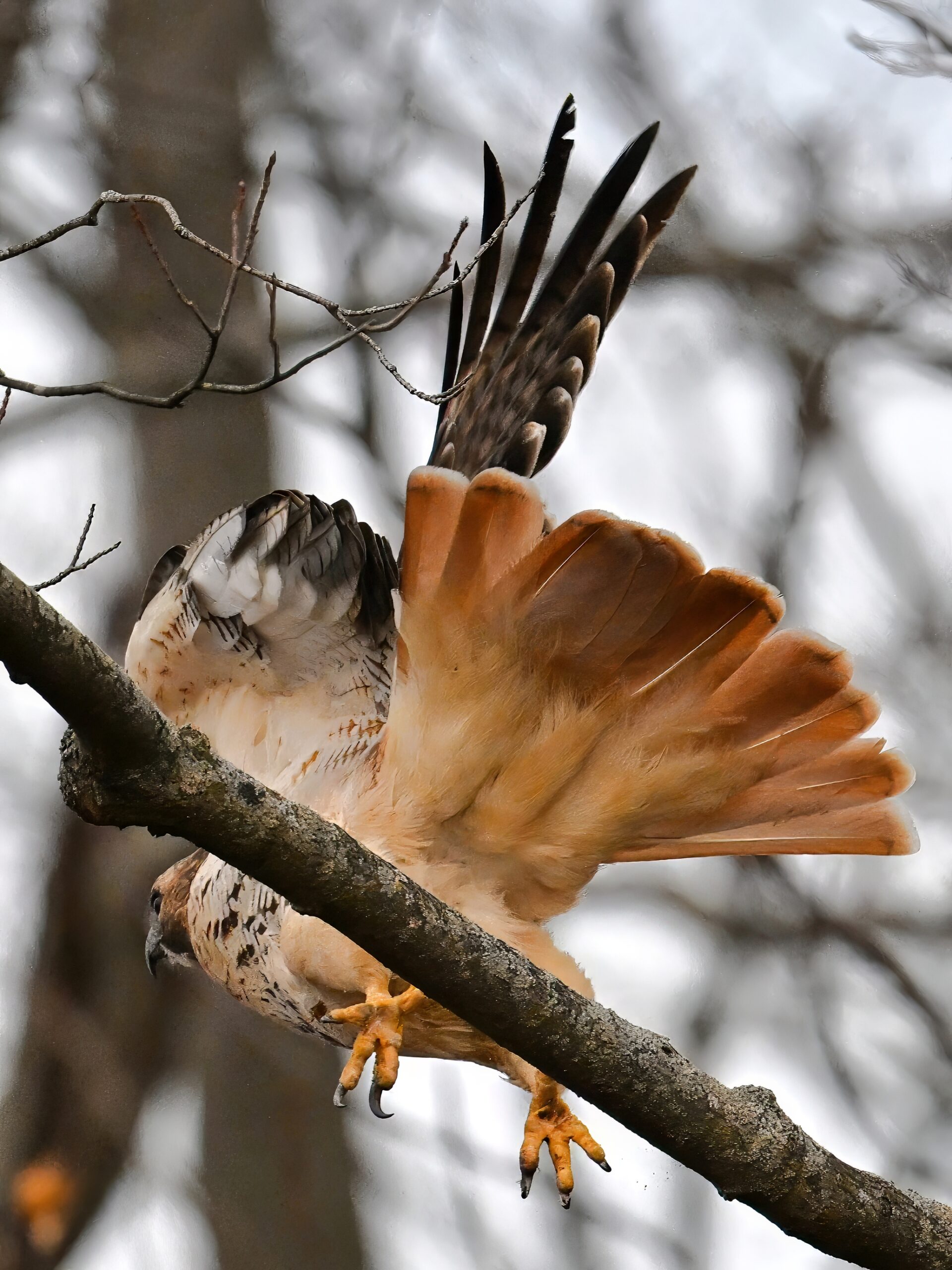
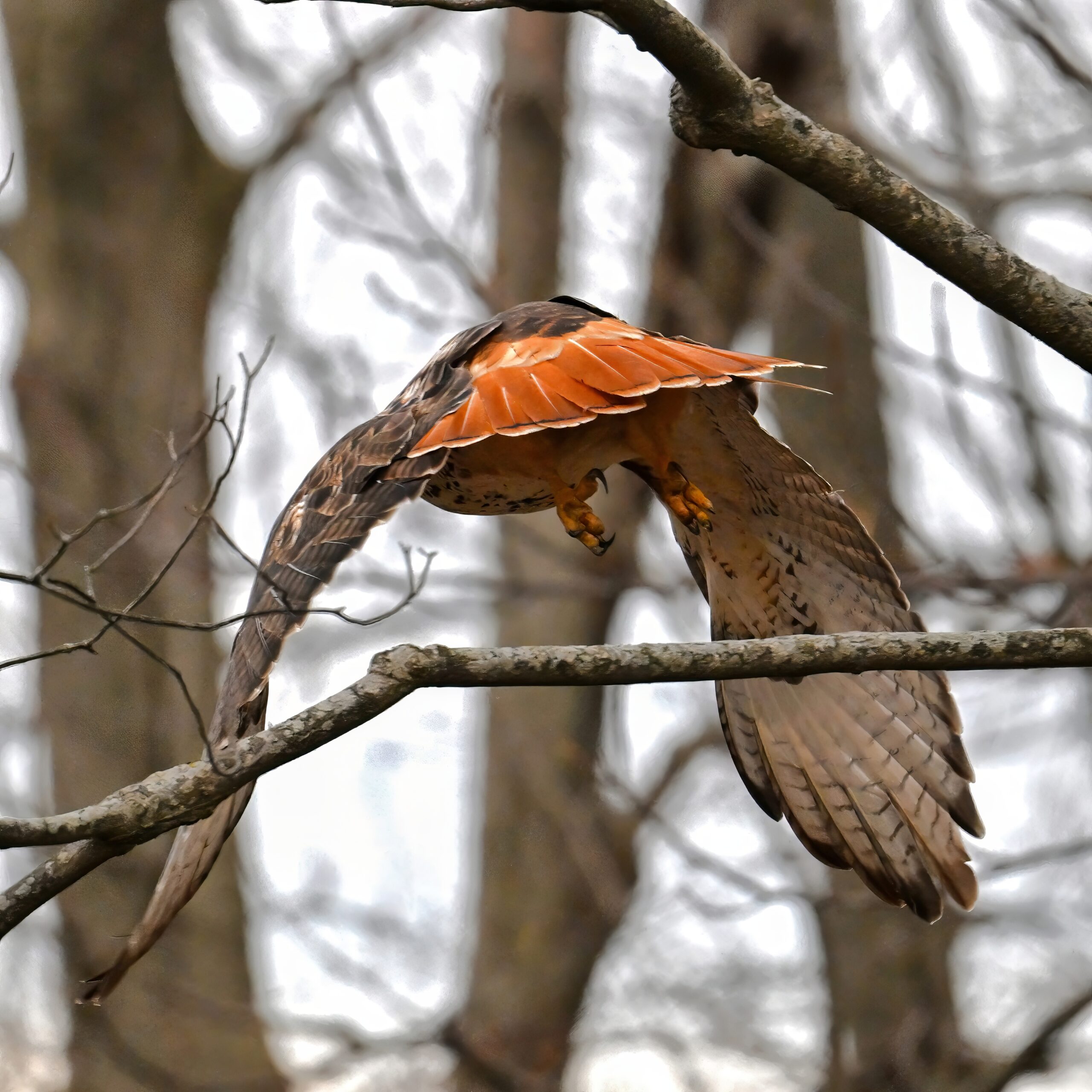
What a delightful photo essay! Loved the ‘give him the tail’ last shot!
gorgeous shots of the hawk! Lots of extra “feathers” to keep warm! JO
Anecdotally, Red-tailed Hawk is probably most common raptor in ‘interior’ Erie Co., followed by Cooper’s Hawk. But both, esp. R-tH, are weather dependent. At PI, probably Bald Eagle is most commonly seen, but again, highly variable depending on conditions.